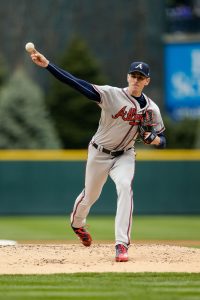The Cubs have acquired outfielder Terrance Gore from the Royals, per an announcement from the Kansas City organization. Cash considerations will head back in return.
Gore, 27, will presumably reprise his role as a late-season/postseason threat on the bases. No doubt he’ll begin his tenure with the Chicago organization in the upper minors, where he has typically resided until rosters expand in September.
Since first cracking the majors in 2014, the light-hitting Gore has taken only 14 plate appearances at the game’s highest level. But he has appeared in 49 total games and racked up 21 steals.
Of course, utilizing a specialist in that manner only requires the commitment of a 40-man spot once rosters have expanded. For the time being, the Cubs won’t even need to tie up a slot on Gore, who had re-joined the Royals on a minors deal over the winter after being cut loose last fall.
Whether or not Gore could also feature on the Cubs’ presumptive postseason roster remains to be seen. The Royals carried him throughout the 2014 and 2015 postseasons, up to but not including the club’s successful return to the World Series in the second of those two memorable campaigns. Despite being in uniform for quite a few contests, Gore has only appeared in eight total playoff games, stealing four bags but never striding to the plate.

